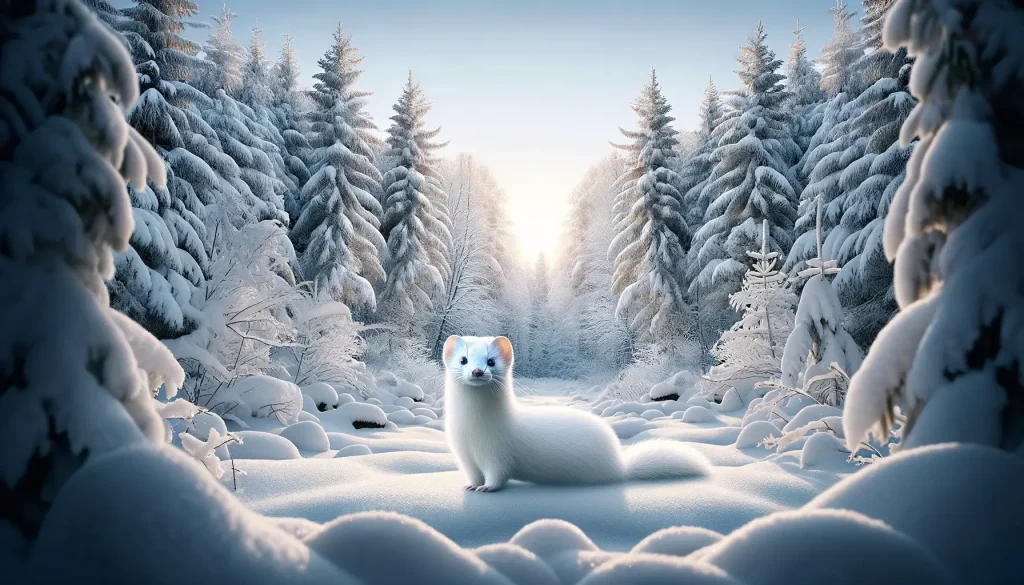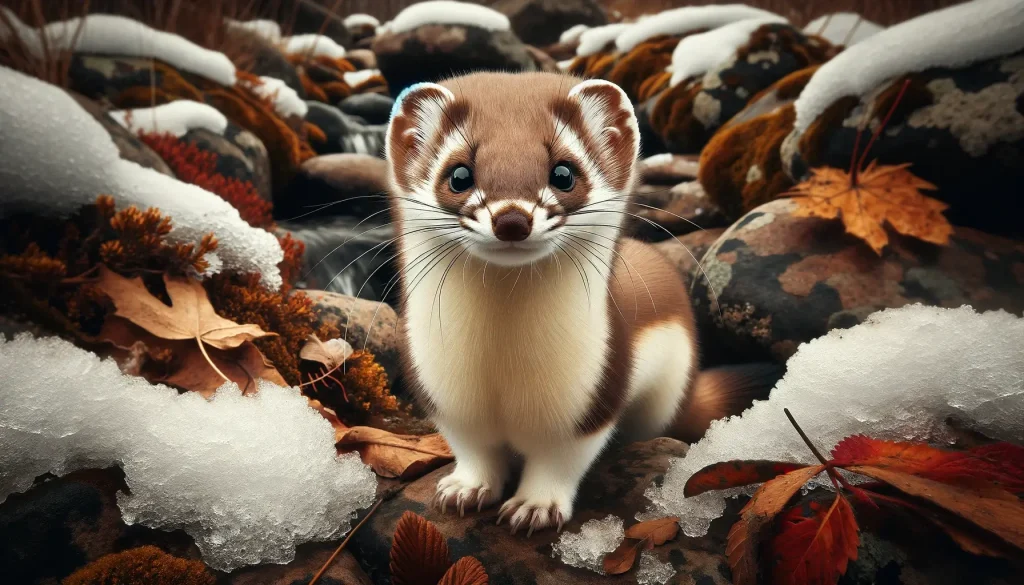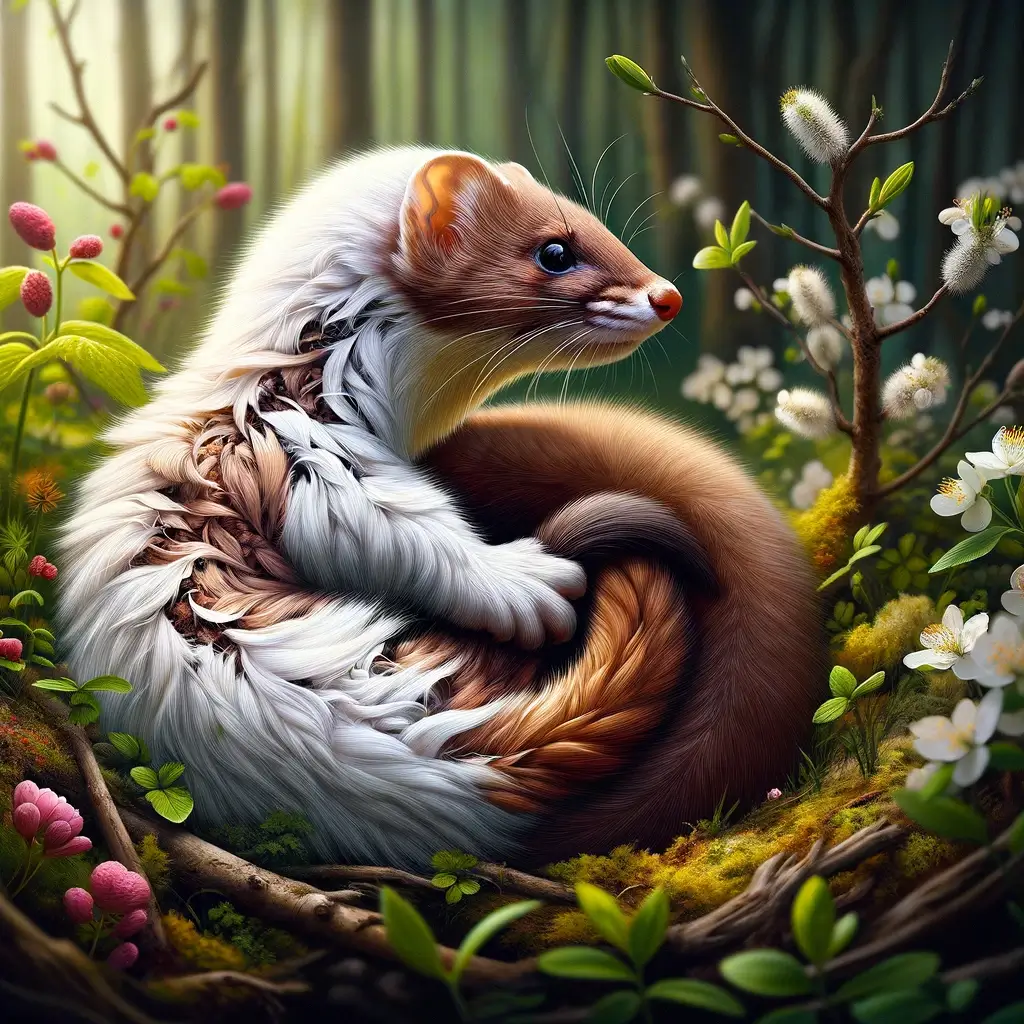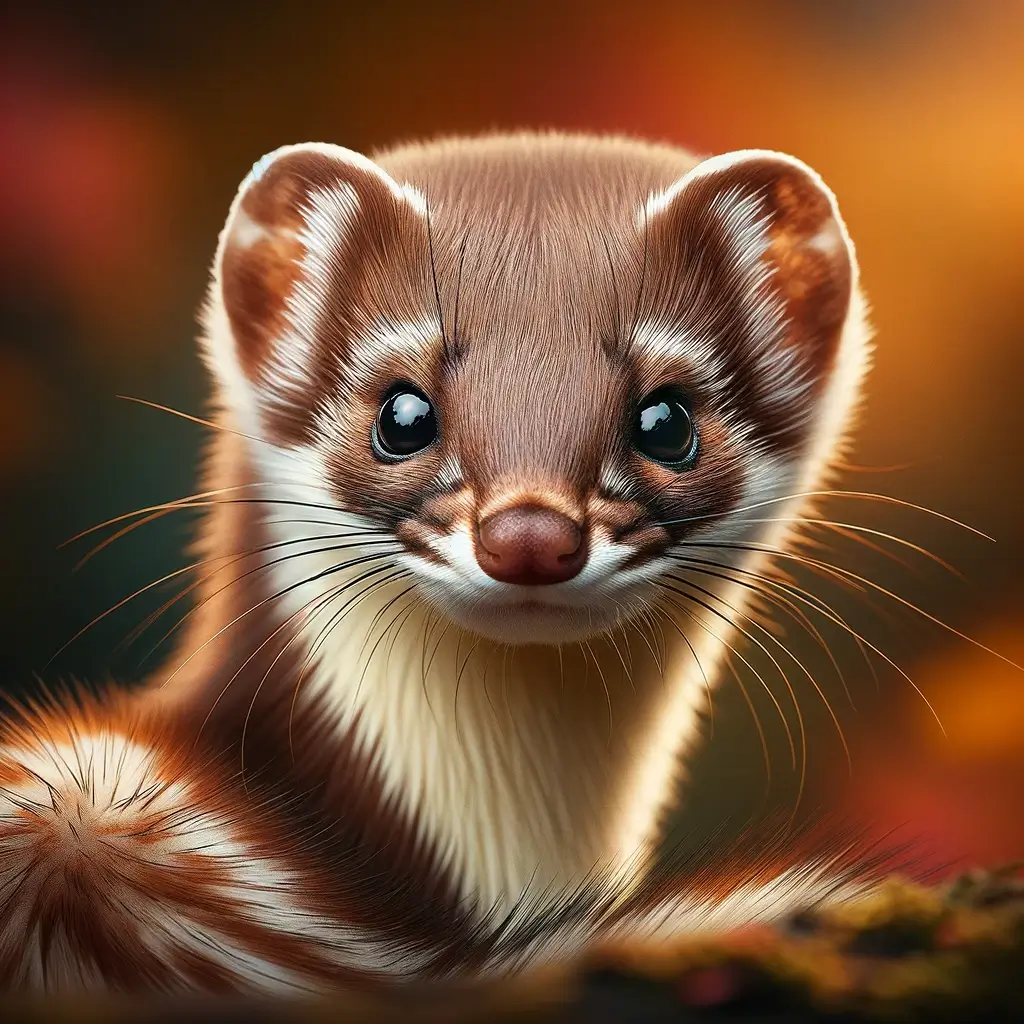
Weasel’s Remarkable Seasonal Color Shift
Weasels are known for their elusive nature and impressive adaptability. One of their most fascinating adaptations is the seasonal color change they undergo. Have you ever wondered how a weasel knows when to shift its fur color from brown to white or vice versa? The key lies in the changing daylight hours. As the days get shorter in late fall, weasels and other similar animals start a remarkable transformation, responding not to the temperature, but to the amount of daylight they are exposed to. This process, triggered by the changing photoperiod, is an extraordinary example of nature’s adaptability.
Consider the short-tailed weasel, also known as an ermine in its white winter coat. Its ability to blend into its environment is crucial for survival. But changing too early or too late into its winter white can spell danger. It’s not just about the temperature dropping; these animals’ bodies react to the decreasing daylight by adjusting the production of melanin, leading to the fading of their brown fur and the growth of their white winter coat. This seasonal adaptation is an incredible response to environmental changes, ensuring that the weasel can remain camouflaged, whether against brown earth or white snow.
The phenomenon of changing fur color in response to daylight is not unique to the weasel. Other animals, such as the snowshoe hare and the ptarmigan, undergo similar transformations for the same reasons. This adaptation highlights the intricate relationship between living creatures and their environments, showcasing how animals have evolved to survive the challenges posed by their changing habitats. The weasel’s color change is a remarkable survival strategy, allowing it to thrive in diverse seasonal landscapes. This adaptability underlines the importance of understanding and preserving the natural cycles and habitats that support such unique wildlife behaviors.
Fun Facts About Weasel’s Seasonal Color Change
Ever marveled at a weasel’s snow-white fur against a winter backdrop? These critters have some cool tricks up their sleeve, or rather, in their fur. Let’s dive into some fun facts about the seasonal color change of weasels.
- Weasels turn white not because of the chilly weather but due to the decrease in daylight hours. As the day shortens, their bodies get the signal to change.
- A short-tailed weasel in its white coat is called an ermine. This isn’t a different species, just a seasonal wardrobe change!
- Changing too soon makes ermines visible against the unfrozen ground, becoming easy targets for predators.
- This adaptation isn’t unique to weasels. Snowshoe hares and ptarmigans also change their coat or feather colors in response to daylight changes.
- The transition from brown to white or back again is gradual. New fur grows in, slowly replacing the old color.
- It’s all about timing. If the snow falls late or melts early, an ermine’s white coat might stand out, increasing the risk from predators.
- Climate and habitat changes can impact the effectiveness and timing of this camouflage, highlighting the need for conservation efforts.

FAQs on Weasel’s Seasonal Color Change
Do all weasels change color with the seasons?
Not all weasels change color. The phenomenon is specific to species like the short-tailed weasel, also known as an ermine in its white winter coat. Species in warmer climates may not undergo this change.
What triggers the weasel’s color change?
The primary trigger is the change in daylight hours, not temperature. Decreasing daylight in fall prompts a reduction in the production of melanin, leading to the white winter coat. Come spring, increasing daylight reverses the process.
Is the weasel’s color change an immediate process?
Transitioning from brown to white or vice versa is a gradual process. It happens as new fur grows in, replacing the old color over time.
Can a weasel’s premature color change be dangerous?
Yes, changing too early or too late can make ermines more visible to predators. This is particularly risky if the snow hasn’t fallen yet, or if the snow has melted, and the weasel is still in its winter coat.
Do other animals have similar seasonal color changes?
Yes, animals like the snowshoe hare and the ptarmigan also change color in response to daylight changes for similar reasons of camouflage.
How does this adaptation benefit the weasel?
It is critical for survival. The color change helps weasels stay camouflaged against predators in both snowy winter landscapes and brown earthy tones during other seasons.
Can environmental changes impact this adaptation?
Changes in climate and habitat can affect the timing and effectiveness of the weasel’s camouflage, potentially leaving them more exposed to predators. This highlights the importance of preserving natural habitats and cycles.
Are there any efforts to study and protect these adaptations?
Yes, conservationists and scientists continue to study and monitor these species, aiming to understand better and protect the natural cycles that support such unique adaptations.


How Do Weasels Know When to Change Color?
The weasels’ color change is closely tied to their internal biological clocks, which are influenced by the photoperiod or the length of day and night. This internal clock helps them sense changes in daylight duration, signaling when it’s time to initiate the color transformation. This process is an innate part of their survival mechanism, finely tuned to their specific environmental needs.
Does the Weasel’s Diet Influence Its Color Change?
While the weasel’s diet does not directly influence its seasonal color change, nutrition plays a crucial role in the overall health of the animal, including the quality of its fur. A well-nourished weasel is more likely to have a thick, healthy coat that transitions smoothly between colors. However, the timing and process of the color change are primarily regulated by light exposure rather than dietary factors.
Can Human Activity Affect the Weasel’s Seasonal Color Change?
Human activity can indirectly impact the weasels’ seasonal color change by altering their natural habitats and the climate. Light pollution, for instance, may disrupt the natural photoperiods that trigger their color change. Moreover, climate change can lead to mismatched seasonal environments, where the snow cover does not align with the weasel’s white winter coat, increasing their vulnerability.
What Is Being Done to Minimize Human Impact on Weasels?
Conservation efforts aimed at minimizing human impact on weasels and their habitats include habitat preservation and restoration projects, as well as measures to combat climate change. Educating the public about the importance of dark skies to reduce light pollution and supporting policies that address climate change are crucial steps toward protecting weasels and their unique adaptations.
Are Weasels Affected by Global Warming?
Global warming poses a significant challenge to weasels, particularly species that undergo seasonal color changes. Warmer winters and erratic snowfall patterns can lead to camouflage mismatches, making weasels more conspicuous to predators. Scientists are studying these impacts closely to understand how weasels might adapt to these changes and what can be done to mitigate negative effects on their populations.

Weasel Adaptations Beyond Color Change
Beyond their seasonal color change, weasels exhibit a range of adaptations that make them remarkable survivors in the wild. While their ability to camouflage is well-known, other traits contribute significantly to their survival. For instance, their slender bodies allow them to pursue prey into burrows, and their high metabolism supports a voracious appetite, ensuring they are always on the hunt for food. This metabolic rate also requires them to consume a significant amount of food relative to their body size, making them efficient hunters.
Furthermore, weasels have a unique reproductive strategy known as delayed implantation, where fertilized eggs remain dormant for several months before implanting in the uterus and resuming development. This ensures that young are born at the most favorable time of year for survival. Additionally, their territorial behavior plays a crucial role in their survival, as they actively defend their hunting grounds from rivals.
Understanding these additional adaptations helps us appreciate the complexity of weasels and their role in the ecosystem. It highlights the importance of conservation efforts to preserve their natural habitats, which support not only their survival but the balance of local biodiversity. These efforts are essential in facing challenges posed by human activity and climate change, ensuring that weasels continue to thrive in their natural environments.
Beginner Guide to Raising Quail at Home
What are the Signs of a Dog Concussion?
What Causes Your Dog’s Ears to Smell Bad?
When your dog’s ears start to emit an unpleasant odor, it might leave you puzzled…
Methimazole Treatment for Cat Hyperthyroidism
Methimazole plays a crucial role in managing feline hyperthyroidism, a condition marked by an overactive…
Got Hummingbirds in your Backyard? Here’s How to Care for Them.
Why Does Your Cat Pee Outside the Litter Box?
Cat’s Litter Box Issues It’s not uncommon for cat owners to face the frustrating dilemma…




